Lightning strikes are increasingly claiming lives in the vast haor regions of Bangladesh. With no protection, farmers and fishers working in the haors were the most affected. Lightning sheds constructed in close proximity to the haors and their houses offer them protection during intense storms, writes Mosabber Hossain.
Farming families in Sunamganj were spending more time harvesting, threshing and drying paddy in the last week of April this year, so as to finish the works before the rains.
Sunamganj in north-eastern Bangladesh had earlier experienced heavy rains and thunders. Six persons had died at separate places while harvesting paddy in a haor, which is a vast shallow depression that gets filled with surface runoff water during monsoons.
The deaths had occurred due to sudden lightning in three upazilas – administrative units of a district – of Sunamganj. Two people were injured. But this is not new. Every year many people die due to lightning, mostly in haors.
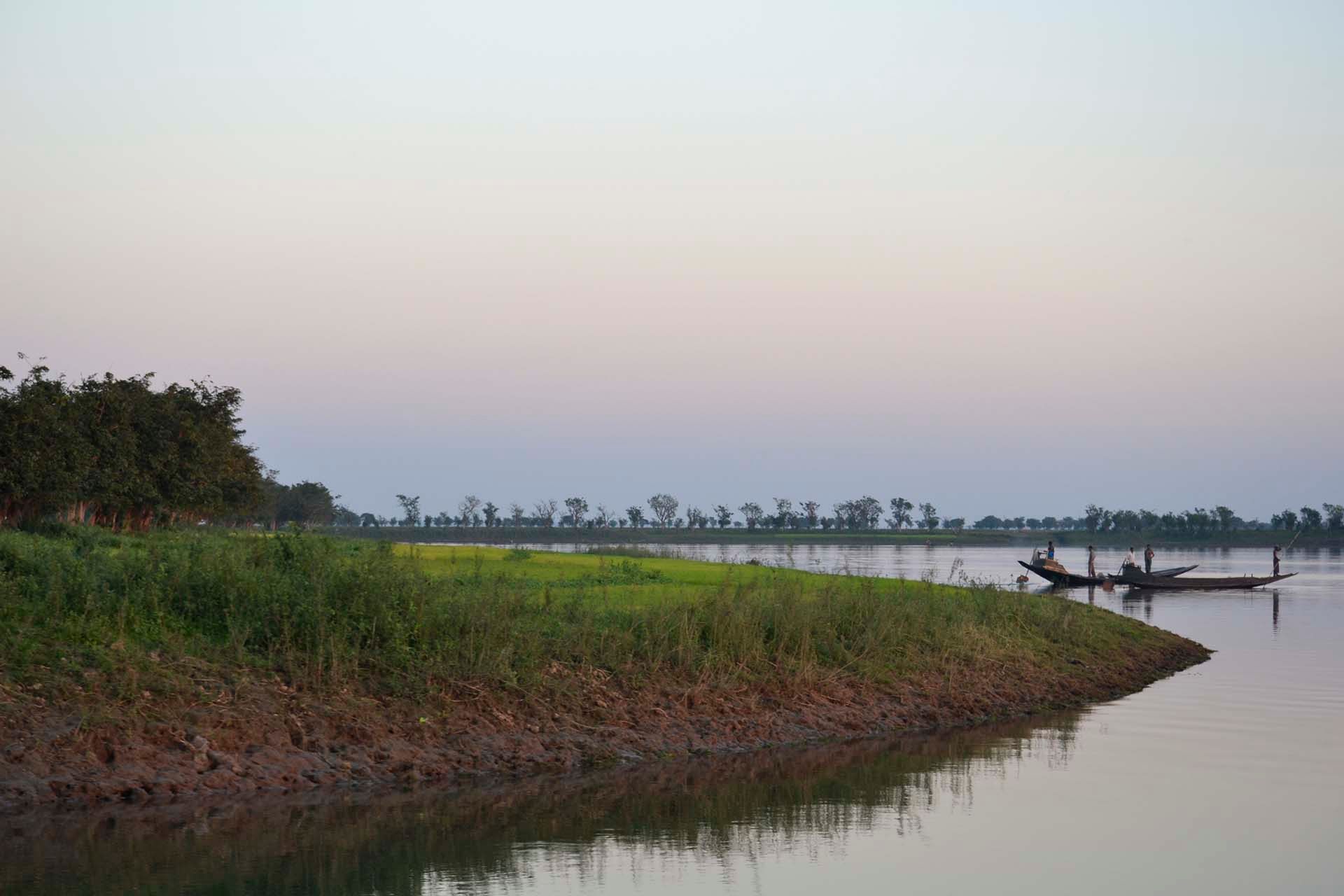
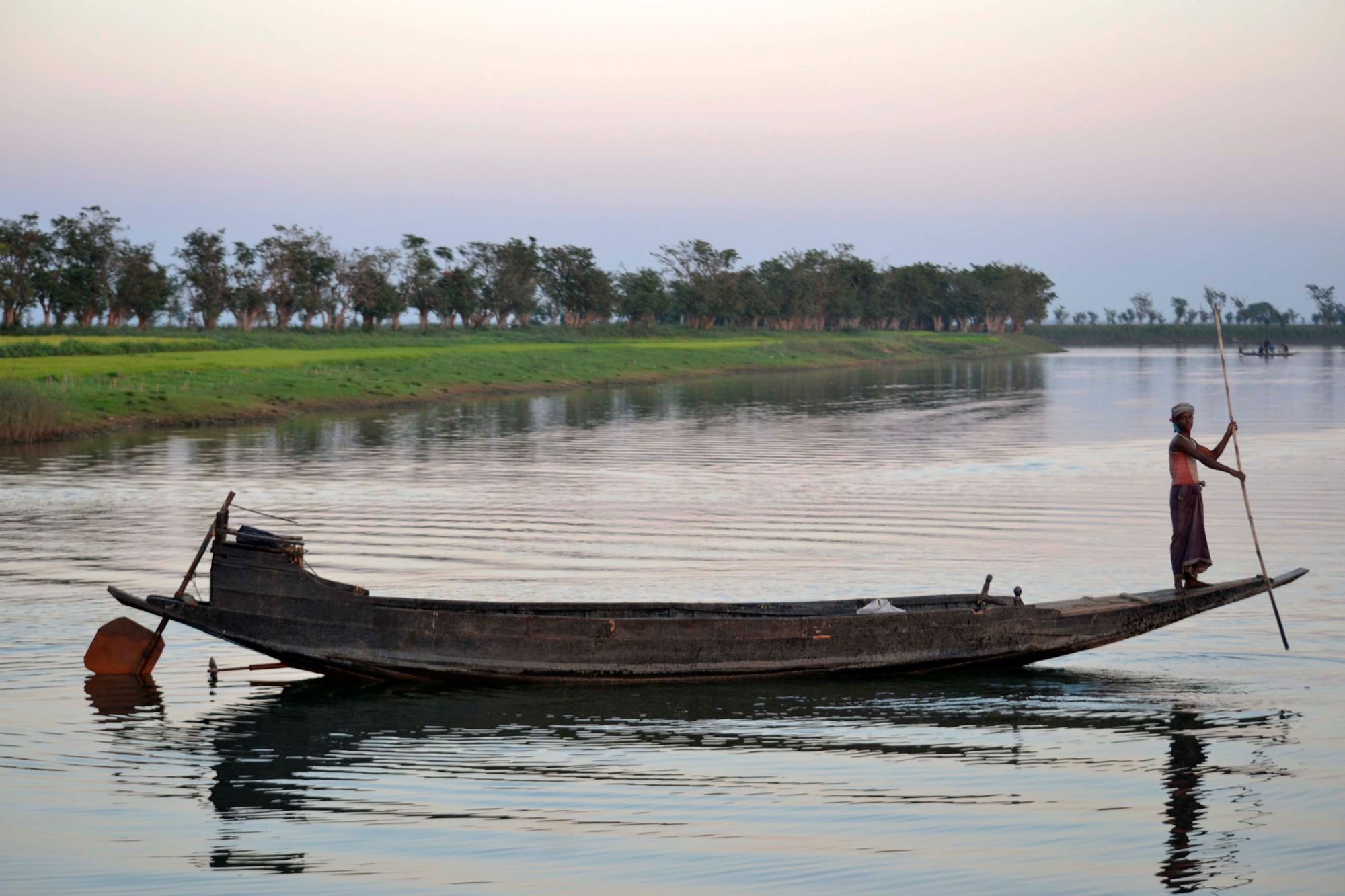
Increasing deaths due to lightning
Many reports have highlighted the vulnerability of low-lying haors, while identifying Sunamganj as one of the most lightning-prone places in the world.
The highest number of deaths in Bangladesh due to lightning occurs in the three districts of Kishoreganj, Sunamganj and Brahmanbaria. Seasonal tornadoes, locally known as kalbaisakhi, happen mostly during April and May.
The number of deaths due to lightning is highest between March and May every year. An average of 265 people die in Bangladesh every year due to lightning, according to information provided by the Ministry of Disaster Management and Relief.
Save the Society and Thunderstorm Awareness Forum (SSTF), an organisation working to reduce such weather-related fatalities, said a total of 340 people died in Bangladesh between April 2022 and May 2023, a majority of them being men. More than 3,000 people have died in a span of more than a decade. Except a dip in 2019, the number of deaths has increased over the years – from 160 in 2015 to 363 in 2021.
Noted climate expert Khalilullah Jibon says that the reason for the increasing number of lightning deaths is due to loss of tree cover. “Once there were large trees in most of the rural areas. Different kinds of big trees including palm, coconut and banyan used to take the impact of lightning. So the risk of human injury was reduced,” he says.
Abdul Alim, head of the research cell of SSTF, concurs. "The two main reasons for the increase in lightning are global warming and the cutting of trees, especially tall trees, in rural Bangladesh,” he says.
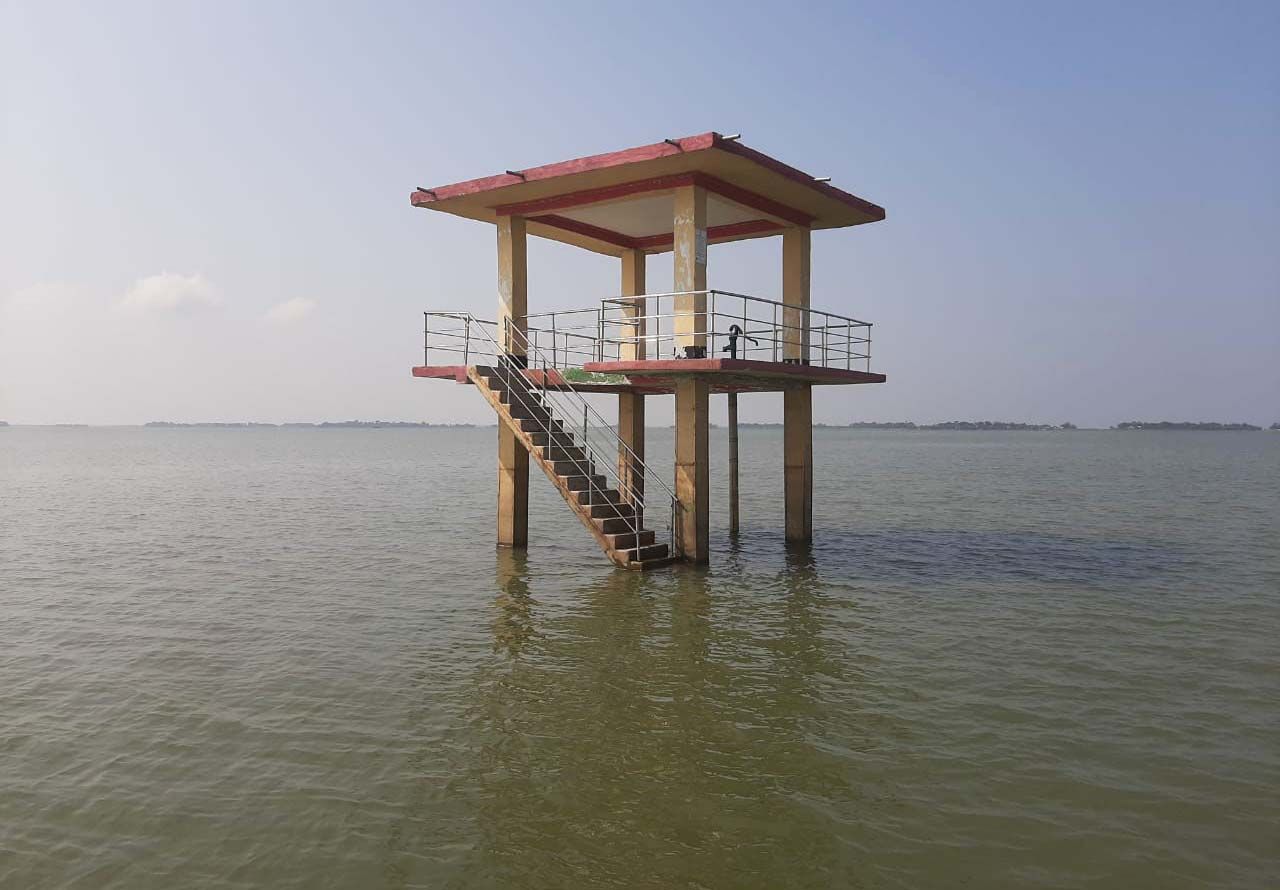
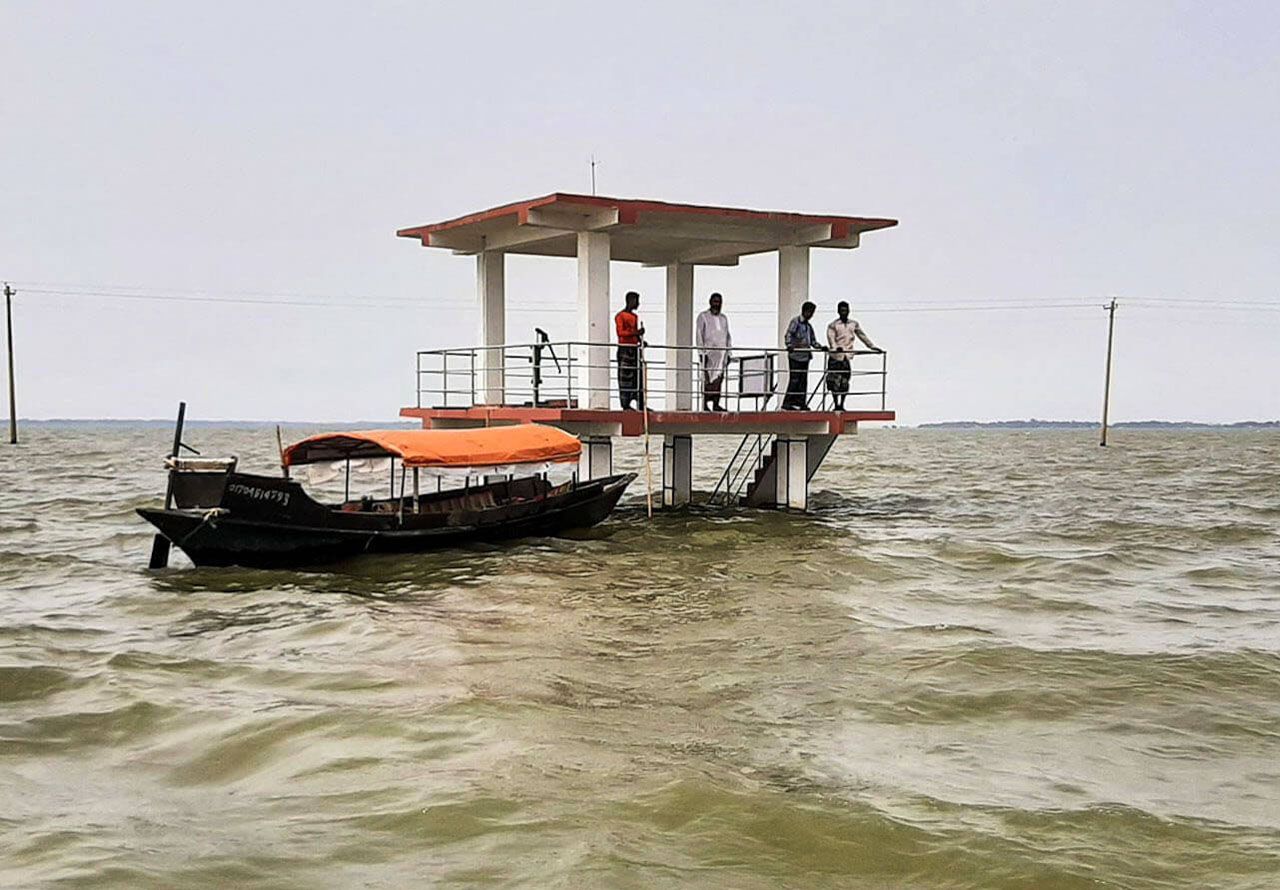
Left: the tube well in the lightning shed ensures safe drinking water for the people when they take shelter during storms. Right: fishers wait out storms in lightning sheds. Photos: UNDP
Farmers the most affected
People concerned say that most of the buildings in the city have protective bars to prevent lightning strikes. So the casualties are minimal in cities. But in villages, especially in agricultural fields, there is no lightning protection system, resulting in more deaths.
Deaths due to lightning happen more in the months of April and May, when farmers in the haor regions harvest the crops.
An analysis of seven years of data by Vaisala, a Finland-based research institute, shows that 70 percent of lightning deaths in Bangladesh occur during agricultural activities, mostly in haors. Apart from this, 14.5 percent of deaths occurred on the way home and 13 percent while bathing, herding cattle and fishing.
“As trees that act as lightning conductors have been cut down, people and cattle in fields and open spaces within a kilometre of the lightning strike become conductors, which becomes fatal,” says Abdul Alim.
Over the past decade, lightning has killed more people than storms, floods or any other disaster. In view of this, the government declared lightning as a disaster in 2016.
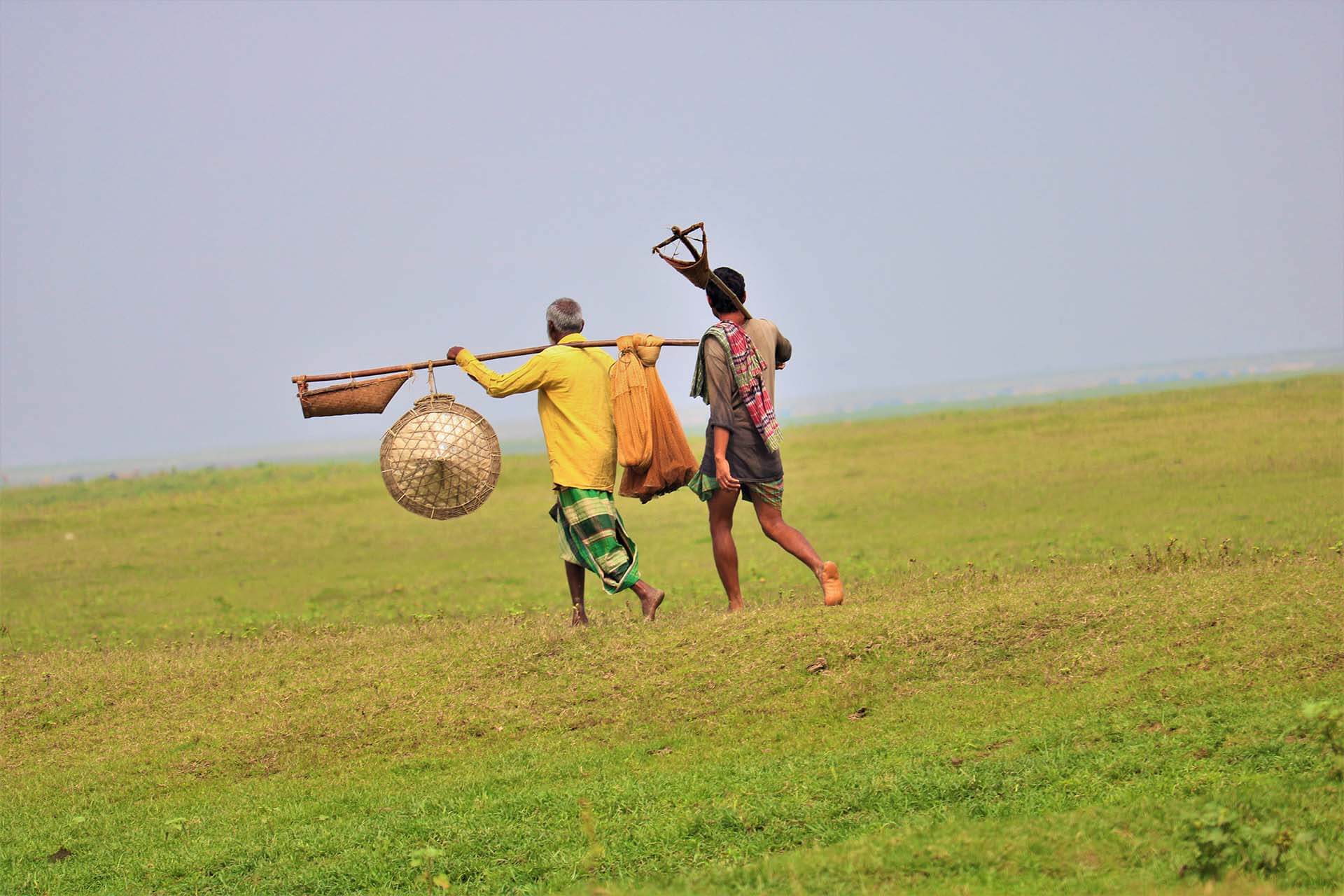
The constitution of Bangladesh recognises the right of every person to get equal opportunity and assistance in disaster. Though lightning has been identified as a natural disaster, the government has not set up any fund for the victims so far. If someone dies due to lightning, nominal assistance is given from the district commissioner’s Disaster and Relief Fund.
“There is no special fund for compensating families of those who die in lightning. Assistance is provided from the regular relief fund. In case of death, we give the family Bangladeshi taka (BDT) 20–25,000 and in case of injury, we give BDT 5–10,000. Apart from this, if the sole earning member dies, there is provision of rice and financial assistance to his family every month,” says M Shahabuddin, Environment, Forests and Climate Change Minister.
People like Mizanur Rahman, the former chairman of the Human Rights Commission, feel that the compensation is not sufficient. "Ordinary people like farmers and fishermen kept the country going even during the pandemic. If a farmer or a fisherman dies due to lightning, it is the duty of the state to take responsibility for his family,” he says.




Clockwise from top left: ducks play their part in maintaining the ecosystem’s equilibrium, which helps in healthy fish population in Tanguar haor; fishing is one of the livelihoods for the haor people, making them vulnerable to storms; a fisherman in Tanguar haor; cargo boats transporting coal from India to Bangladesh through Tanguar haor. Photos: Mosabber Hossain
Lightning protection sheds
Palm saplings have been planted in different parts of the country to prevent lightning. But it will take years for the trees to grow and be effective.
“The farmer has to go to the field, harvest rice, and so on. As an interim measure to reduce the impact of lightning, installing lightning arrestors on towers in these areas may be effective,” says climate expert Jibon.
To this effect, under the Local Government Initiative on Climate Change, also known as LoGIC project, three multipurpose lightning sheds have been constructed by the union parishads or local administrative councils. The sheds, designed for year-round service, are two-storied structures, with the first floor housing a tube well that benefits the entire community. Solar-powered lights have also been installed to ensure visibility and usability at night. This project has been supported by international organisations such as United Nations Development Programme (UNDP), Bangladesh, UN Capital Development Fund (UNCDF), European Union, Sida, the Swedish development agency and Denmark. This particular infrastructure is funded by the Performance-based Climate Resilient Grant (PBCRG) of UNCDF.
“We continue to champion resilience against the impacts of climate change. We are working towards a more climate-resilient and sustainable future for Bangladesh, through programmes like LoGIC,” says Stefan Liller, resident representative, UNDP Bangladesh.
The haor residents consider this project a good intervention that would be helpful for farmers, fishermen and boat passengers in the area. It has become a permanent asset for the union parishad, benefiting around 1,900 people.
“When we know the weather is getting bad and there is a possibility of intense rains, we go to the lightning sheds as we feel safe there,” says Sabina Begum, a homemaker from Sunamganj’s Rofinagar Union.
Salauddin, a fisherman of Atgaon Union, shares the same views.
"The installation of such towers in haor areas will reduce the number of lightning deaths. However, everyone, especially farmers and fishermen, should be made aware of the sheds,” says Khalilullah Jibon.
Haor people earn by fishing or cultivating rice, and so these sheds are beneficial for them, according to Md. Nurul Islam Sarker, a development professional. He says, “They live within one or two kilometres from the sheds. So they can take shelter. But they do not get weather warnings. If the government can send advanced information of impending rains and storms, they will have time to move to the sheds, and lightning deaths can be reduced.”





